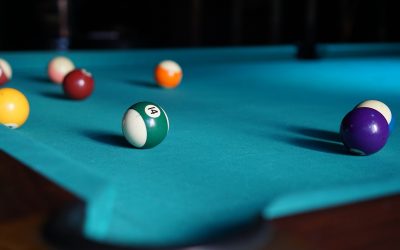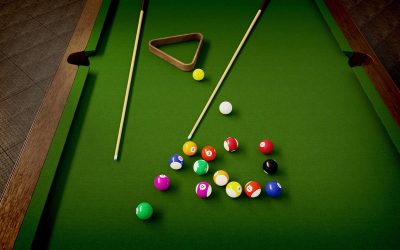
Billiards, pools, and snooker have long been associated with the upper classes. Imagine the scene: in the vast halls of Victorian England, exquisitely dressed gentlemen and gentlewomen assemble around ornate tables, cue sticks in hand, ready to fight in a war of wits and ability. These beautiful diversions were not limited to a single region of the world; they spread over oceans and continents, eventually making their way into the bustling saloons of the American West.
People from many walks of life came together in these various surroundings to share their love of cue sports. Whether it was a nobleman seeking escape from the rigours of aristocratic life or a cowboy seeking a moment of relaxation between cattle drives, the fascination of the cue stick remained universal.
What made these games so compelling? It wasn’t just the thrill of competition, though that was clearly a factor. The combination of skill and strategy, the delicate balance of accuracy and grace, pulled in both players and spectators. Every billiard stroke was a geometric beauty, and each shot demonstrated the player’s knowledge of angles and trajectories. In a pool, it was about more than just sinking balls; it was about controlling the flow of the game and outmanoeuvring opponents with devious tactics. In snooker, precision was everything, with players navigating a sea of red and coloured balls with the grace of a ballet dancer.
Billiards
Historical Background
Billiards, the grand grandpa of cue sports, can be traced back through history. From its humble beginnings as a leisurely lawn pastime to the polished indoor game played today, billiards has become ingrained in the fabric of athletic tradition.
Equipment
Behold the billiards table, a haven of accuracy and grace. Its immaculate surface, free of pockets, encourages players to embrace the game’s purity. The smooth lines of the cue stick, the polished orbs of the cue, and the red balls—each aspect demonstrates the skill and mastery inherent in billiards.
Gameplay
In the realm of billiards, simplicity hides complexity. Each stroke is a symphony of angles and computations as players move around the table with grace and intelligence. From the classic straight rail to the sophisticated cushion caroms, billiards provide a plethora of variations to test the mind and refine the talents of its practitioners.
Pool
Historical Background
Pool, the energetic offspring of billiards, made its debut in the bustling saloons of nineteenth-century America. With the introduction of pockets to the table, the pool sparked a revolution in cue sports, enthralling players with its combination of strategy and adrenaline.
Equipment
Consider the pool table a hub of competitiveness and companionship. Its sleek surface, embellished with six compartments that resemble jewels in a crown, sets the scene for a symphony of shots and movements. Every element in the world of pool, from the numbered balls to the crack of the cue stick, contributes to the game’s drama.
Gameplay
Pool’s diverse gameplay options cater to all preferences. From the classic Eight-Ball, where players dance between solids and stripes, to the lightning-fast Nine-Ball and the strategic Straight Pool, each game offers its own set of obstacles and potential for expertise.
Snooker
Historical Background
Enter the legendary halls of snooker, a symbol of British inventiveness and sophistication. Born in the furnace of billiards and pool, snooker arose in the late nineteenth century as a tribute to precision and strategy.
Equipment
Gaze upon the snooker table, a tableau of precision and tradition. Its elongated form and tight pockets demand the utmost skill and finesse from its players. The red and coloured balls, the whisper of the cue stick – in the realm of snooker, every element is a testament to the artistry of the game.
Gameplay
In the world of snooker, every shot is a ballet of precision and calculation. From the gentle tap of the cue ball to the thunderous break, players must navigate a labyrinth of strategy and technique to emerge victorious. With its meticulous rules and intricate scoring system, snooker rewards those who dare to master its complexities.
Key Differences and Comparisons
Billiards
Table Dimensions
Billiard tables, unlike those for snooker, do not have pockets; they have a larger open surface on which players can display their skills. They are about 10 feet long and 5 feet wide to give more room for cue ball control, which is the key to successful play.
Balls and Cues
In billiards, two white balls are used as cue balls, and one red object ball is usually played using cues made of wood or composite materials. These cues enable the most delicate shots possible in which players may exhibit their sense of touch.
Rules and Scoring
Scoring in billiards is straightforward. One stroke that breaks both opponents’ cue ball and red object ball after contact earns points. The regulations focus on strategic positions as well as calculated angles because they reward people who can think ahead by playing skilfully, unlike their rivals.
Skill Sets
As one of the games, a set of skills required in the pool is focused on cue control and strategies. This calls for particular precision and finesse to make sure each hit counts and moves the cue ball with an inch-perfect accuracy. In this game, strategic positioning and the use of angles are considered to be essential because players strive to outsmart opponents while maximizing their opportunities to score.
Pool
Table Dimensions
Pool table sizes range from seven to nine feet, and have pockets arranged at different points along the sides. These surfaces, therefore, feature the challenges of moving swiftly but accurately, considering that players must create scoring chances without falling into traps.
Balls and Cues
Apart from a white ball called a cue ball, there are also solid and striped balls numbered from 1 to 15 in Pool. Moreover, cues used in pool are usually short and lighter than those of billiards since they have been designed to suit its fast-paced nature and facilitate quick shots.
Rules and Scoring
Thus, there are many different versions of both rules and scoring systems in the pool. Starting with traditional eight-ball and reaching for lightning-fast nine-ball or even strategic straight pool, gamers must adapt themselves to fit these goals that they must achieve under varied techniques of gameplay.
Skill Sets
Shot-making and strategic play are some of the skills players must perfect in a swimming pool. Precision and strategy are what it demands of players who try to wade through the table with agility and precision so as to take chances on scoring while outshining their adversaries.
Snooker
Table Dimensions
Snooker tables have elongated shapes and tight pockets that call for delicate moves. Being 12 feet long by 6 feet wide, these tables offer an ambiance where players can exhibit their talents in addition to strategic thinking.
Balls and Cues
Snooker has a constellation of red balls, coloured balls, and a cue ball. With finesse and accuracy, players manipulate cues through skillful patterns of play to outwit opponents while capitalising on scoring opportunities.
Rules and Scoring
The game is famous for its meticulous rules and complex method of scoring. In this game, reds followed by colours will earn points, while fouls or any other infringement will attract penalties. This focus on precision and strategy makes it necessary for the skilled player to master how he should bring his pieces into an advantageous position when possible points come up.
Skill Sets
In snooker, players must master the art of precision and strategy. The game demands meticulous planning and execution as players navigate the table with finesse and precision to outmanoeuvre their opponents and capitalise on scoring opportunities while adhering to the game’s intricate rules and regulations.
By providing separate sections for the key differences and comparisons for billiards, pool, and snooker, the blog offers a comprehensive overview of the unique characteristics and nuances that define each cue sport.
Conclusion
In conclusion, the world of cue sports offers a captivating tapestry of competition, skill, and tradition. From the elegant simplicity of billiards to the dynamic excitement of the pool and the strategic depth of snooker, each game presents unique challenges and rewards for players of all levels. By understanding the key differences and nuances of billiards, pool, and snooker, enthusiasts can deepen their appreciation for these timeless pastimes and embark on a journey of discovery that will enrich their enjoyment for years to come.
By infusing each section with rich, descriptive language and valuable information, this blog serves as a comprehensive guide to understanding the nuances and distinctions of billiards, pool, and snooker, catering to both enthusiasts and newcomers alike.
FAQs
Are pool and billiards the same thing?
While pool and billiards are often used interchangeably, they refer to different cue sports. Billiards typically refers to carom billiards, played on a table without pockets, while pool refers to pocket billiards, played on a table with pockets.
Why is a pool also called billiards?
The term “billiards” is sometimes used as a general umbrella term for cue sports, including pool. However, the pool is technically a specific variation of billiards that incorporates pockets into the table, distinguishing it from other forms of billiards.
Which came first, pool or billiards?
Billiards predates pool, with origins dating back to the 15th century. Pool emerged as a distinct cue sport in the 19th century, evolving from various billiards variants and gaining popularity in America.


